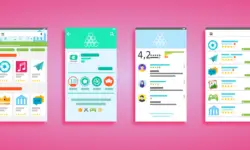Last updated on July 4th, 2020 at 12:25 am
Writing a captivating call-to-action (CTA) is crucial for any content you create online.
You want to make sure that your content convinces readers about your product or service. Also, you want it to lead to effective conversions. Otherwise, why create content at all?
That’s where CTAs come in.
It’s important to understand how to create gripping CTAs for all your content. Ones that excite and intrigue your readers, ones that get you the results you need.
Many online businesses and brands have countless CTAs they’re trying to push to an audience. Online readers have access to infinite knowledge at the touch of a button.
Therefore, you need to stand out from the rest and learn the difference between brilliant and boring CTAs.
Not all call-to-action messages are created equal.
– Neil Patel, Digital Marketing Entrepreneur
Luckily, you’re in the right place to gain that vital knowledge.
Here you’ll learn what a CTA is, why it’s important, and what key elements get your CTA more clicks.
CTAs and Their Purpose
A call-to-action, in the simplest definition, is an incentive that’s meant to invite readers to act fast. A CTA can present itself in the form of an image or text.
In blog or article writing, the main CTA of your content comes at the end of your text, after you’ve written a body that answers your readers’ original questions.
The final CTA is a link within a sentence or two that tells your readers what to do next. This next step can include actions such as:
- Learn more: a link to another article on your website with added information on the topic
- Book a demo: clicking leads the reader to a webpage or form to try out a product or service
- Talk to an expert: providing the reader with a way to communicate with a real-life problem solver
- Enroll now: a link convincing your audience to become more knowledgeable on a topic by taking a course
- Buy now: a prompt to make a purchase at that moment
- Take the quiz: a way to both educate your audience and gain more data about them
- Subscribe today: encouraging your readers to stay updated on future blog content
- While stocks last: creating a sense of urgency to buy a product at the risk of missing out
Purpose of CTAs
The act of clicking leads your audience to the next step in the conversion process. As a result, this turns them from simple readers of your content into potential customers.
It’s at this stage that they get to decide whether to follow through with action, meaning that CTAs are key to increasing your conversions.
Whereas your content is helpful to readers, your CTAs make that same content meaningful. As a result, the CTA is the most crucial part of your online blog.
You want to absolutely avoid messing up your CTAs at all costs. Because if you do, you risk:
- Losing out on potential clients, affecting your bottom line
- Misleading your target market, which leads to negative opinions about your business
- Pushing your audience away by coming off as needy or desperate for clicks
- Wasting the readers’ time by failing to provide the solution they were looking for
- Confusing the audience about what it is you’re offering
- No one noticing your CTA, missing the entire point of your content
However, creating excellent CTAs for your article or post will result in:
- A grateful audience for providing the solution they crucially needed
- Definite increases in conversions, which mean *clears throat* “Money, money, money, money… money!”
- Trust between your readers and your business, creating a strong community
- Return customers who believe in your ability to provide solutions on related topics
- Clarity on what your business or brand is all about
- New customers who have heard via word-of-mouth that your business is THE answer
Elements of a Good CTA
Many things go into making a remarkable call-to-action. The way you write it, the way you display it, and the words you use are all vital parts of a captivating CTA. And each element is equally important.
These essential factors include:
Urgency:
You want your readers to act as they read your content. You don’t want them to wait and risk forgetting about your CTA. Make them feel like they would miss out if they didn’t act immediately. Using words that evoke time is a great way of creating urgency.
You can use terms like:
- Today
- Now
- Limited time offer
- Promptly
- Immediate
- Before the deadline
Length:
You don’t want your CTAs to be too wordy. Long sentences can seem like a challenge to your readers, who are not visiting your site in search of a challenge. You run the risk of your readers losing interest or not reading it at all if it’s too long.
Make sure that your sentences flow smoothly. Keep it short and straightforward.
To confirm that your CTA sentences won’t tire your readers, you can use the Hemingway app. This app will let you know if your lines are too hard to read, among other benefits.
Strong Action Verbs:
Tell your audience what you want them to do. Don’t hesitate and don’t leave it up to them. They landed on your page for answers and for your honest opinion, so give it to them.
Don’t use words like “you can…” or “if you want to”. Instead, use terms that give direction like:
- Download
- Subscribe
- Buy
- Read
- Apply
- Send
- Sign up
- Click
Clarity:
Let your readers know what they should expect by clicking on the link you provide. Don’t mislead them. Add a sentence or two to your CTA describing exactly what they’ll find on the next page. Tell your audience how clicking will benefit them. Be truthful.
Enthusiasm:
You want your CTA to incite a strong response from your audience. Therefore, you should use words that can excite your audience. Make them feel like it would be incredible for them if they clicked your call-to-action.
A smart way of creating enthusiasm is by using the exclamation point to your advantage. You can use it at the end of captivating phrases for dramatic effect like:
- On sale now!
- While stocks last!
- 50% off!
Appeal:
You don’t want to threaten your readers into clicking because this will have the opposite effect. Remember that your content exists to assist your audience. Your CTAs should further help your reader with the problem that prompted them to come to you in the first place.
Yes, you want to create urgency, but you don’t want to use force.
Use a friendly tone in your wording, one that makes it easy for people to trust your word.
Relevance:
It’s important that your CTA relates to the content you’ve created. Don’t add a CTA for the sake of adding one if it doesn’t make sense. Otherwise, readers will wonder what it’s doing there and they won’t click.
Even worse, they might disregard your entire blog post thinking that it’s all nonsense. And then they’ll miss any CTAs, which are actually useful.
Structure:
Your CTAs need to stand out from the other content on your blog. Otherwise, readers might miss them. So make them remarkable by where and how they’re placed. Everyone should understand that “This is the CTA. This is what the blog wants me to do next.” Get creative with your CTAs.
Get Started
Every business with an online presence needs content, and all content needs a call-to-action. It’s a vital part of marketing your business or brand. And you now understand why. Also, you know what to consider when creating your captivating CTAs.
Now you need to learn how to create compelling blog content on a consistent basis to go with your wonderful CTAs. SO, craft impressive CTAs now and gain more organic traffic for your site. Start now!
About the author:
Katrina McKinnon is the founder of McKinnonGroup.com.au. Her company creates content – at scale – for content marketers. Buy pillar pages, skyscraper posts, blog articles, and more.



